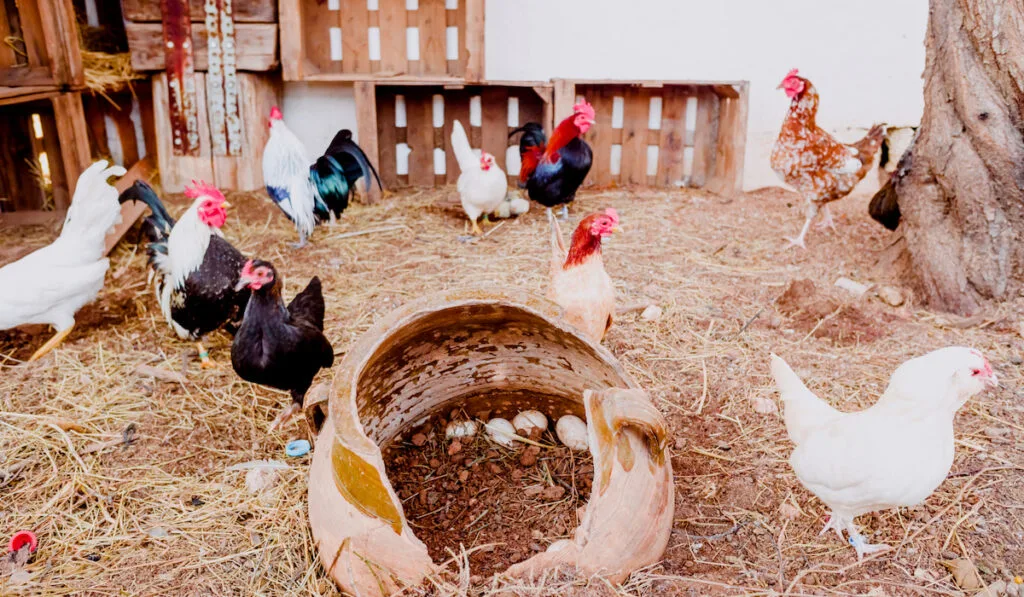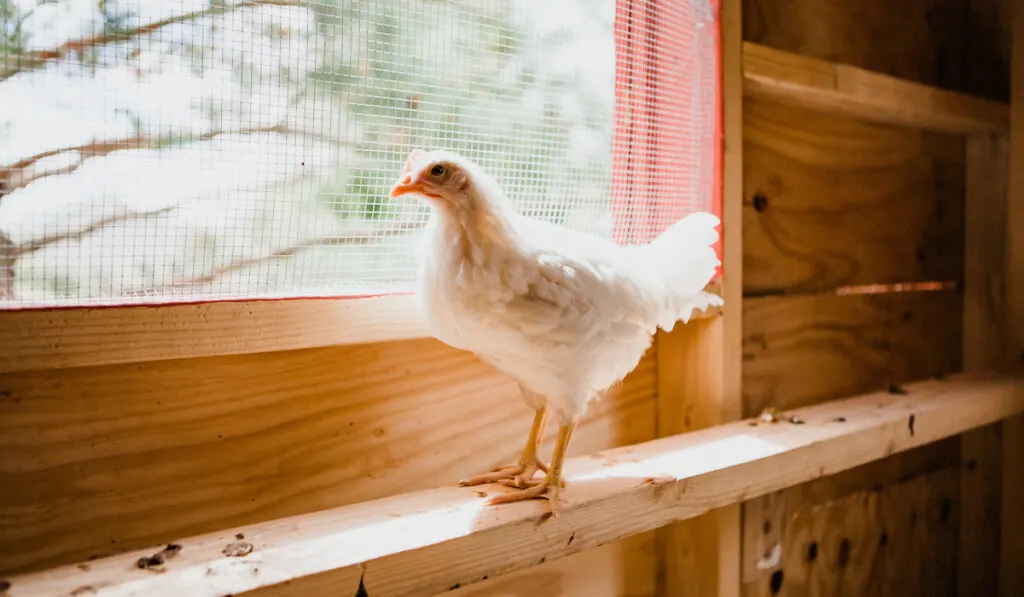Are you feeling ready to raise chickens? There are lots of benefits to it, including fresh eggs daily, ingredients for a healthy compost pile, the fact that these birds eliminate insect pests, etc. But there’s also a lot of work involved. If you don’t have the experience, it can become an overwhelming situation.
If you’re planning on having chickens at home, you need to make sure you have an environment that is favorable to raising healthy birds.
The first thing you want to consider is a coop.
Building one can be a little intimidating and you might feel puzzled since there are so many things that have to be analyzed before you begin. No worries.
With math and a few considerations, you can build the best home for your chickens.

Table of Contents
What is a Chicken Coop?
For starters, what is a chicken coop exactly? It’s a structure that provides shelter to the birds from the weather and predators.
Chickens are sound sleepers, so they are completely helpless when they roost or nest. They need to have a safe housing space.
The coop is a must, but what is the correct way to build one? How many chickens can I keep in a coop? What is the ideal size of a flock? Read on and answer your questions.
Size and design
Flock age, climate, season, and free-range garden time are just some of the factors that determine a coop’s design and size. Are your chicks going to range free or if they are going to be confined?
These birds need space to be active, to roam, and to forage. Confinement is needed but only at certain times of the day.
If you’re just starting, a small flock is the best choice. It’s also suggested that you leave extra space to expand since experts tell us raising chickens is addictive.
Begin by owning at least three chickens. This is a good starting point. If you have a large space, you can extend the volume of your flock, maybe add new breeds or rescues.
Also consider that there are many breeds of chickens, which vary in size. This means the bigger the bird, the more square feet required per bird.
While free-range chickens need a smaller shelter space, having confined birds entails much bigger space to roam, roost and peck. They are social animals and have a pecking order, and in every flock, there are dominant and less dominant birds.
Problems like excessive pecking, stress, diseases, aggressiveness, and even cannibalism are resolved when chickens are provided with a larger range for their natural movements and needs.

How to know what is the right coop size for the number of chicks you own? There is a simple formula that will help you solve this math problem.
Once you decide if your chickens will be confined or free-range, you need to determine which breed you want to work with. If your birds range freely, then consider something between 2 – 4 square feet per bird, depending on the breed size.
For example, a Bantam chick needs only 2 square feet. A slightly bigger breed, like a White Leghorn, requires 3 square feet. And a heavy breed like a Barred Rock or a Buff Orpington, demands 4 square feet to be comfortable.
If you’d rather have them confined at all times, then plan for 5 feet per bird for small breeds, 7.5 square feet for medium-sized breeds, and finally, 10 square feet for heavy breeds.
Now multiply the number of birds by the square feet required for each. For example, one large bird needs 4 square feet and you own 4 chickens.
The result indicates your coop has to measure 16 square feet. If you own 10 chickens, the answer would be 40 square feet, and finally, 80 square feet for 20 birds.
Adapting to your weather
Another important topic that is decisive towards the size of your coop is your location’s climate. Chickens enjoy moderate temperatures (around 55°F) and dislike the cold and the snow.
If you live up north, your coop needs to be tight and well-insulated. The birds will keep themselves inside during the cold season, so consider owning a coop with at least 5-10 square feet per chicken.
The fertility of hens and roosters is also affected by lighting. The more, the better. Place a window where enough sunlight will be let in to keep the coop nice and warm but not overheated.
Ventilation must be considered according to the season to block the cold air in the winter and keep the coop fresh in the warmer months. Proper air circulation will avoid ammonia buildup that can cause health issues to their respiratory system, feet, even poison the chickens.

Nesting, roosting and accessibility
Nests are a crucial aspect of your coop. They should be at least 10 inches tall and wide, like squares. Four to five chickens can fit in a nest box. Experts recommend building deep nests, with no direct sunlight exposition, for hens to go in to feel safe.
You require at least one nesting box for every four layers in the coop and don’t forget to build an access to the nest boxes from outside for whenever you want to gather eggs. (And by the way, when it comes to personal egg consumption, have two laying hens for every person that eats eggs.)
Chickens also need roosting space. It’s in their nature to fly and perch. If they don’t have anywhere to roost, you will find your birds flying up on to perch on trees.
Provide them with poles that are two to three feet high at least, if they are higher, build something they can use to get on top, like a block of wood with small strips that can act as a ladder is great.
When designing the coop, take into account that you will need food storage space and enough access for cleaning and collecting eggs. You don’t want to be all hunched or uncomfortable while doing maintenance.
Don’t forget to add waterers (one for every three to four birds), wood shavings, and straw for the floor and bedding.

The pen and garden
When it comes to the garden, you need space for it to flourish. If not, your birds will forage in excess causing bald spots. And of course, plenty of poop, foul smell, and flies.
Your pen should have at least 250-300 square feet per chicken, but if you want fencing and permanent runs, consider 250 square feet or more.
The Bottom Line
A chicken coop doesn’t need to be complicated. Chickens are active animals but also need to be confined for several reasons. Make sure they are not stuffed in small areas since it’s detrimental to their health and inhumane.
It’s easy to fulfill these birds’ needs if you start small and let the flock grow in size as you are learning. Experiment with different breeds, try different types of feeds, do research and take care of the safety of your birds. It’s also smart to talk to other keepers with more experience that can share tips and help you out in challenging situations. Good luck!
